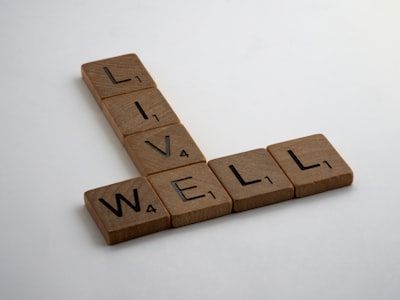

-
Includes Credits
Buildup STEAM launched at Mott Children’s Hospital in 2018 to provide Bedside Robots experiences to patients and families. Since then the program has grown and we are working on partnerships with our third and fourth hospitals. During this presentation, we will discuss the unique approach we have used to provide a variety of hands-on experiences in the hospital setting. We will discuss our most successful Lego based projects including 1. Bedside Lego robotics. 2. CCTV build along projects. 3. Lego scavenger hunts to promote exploration of the units. We will show the feedback we have received from our patient experience surveys, outlining the impact from the patient perspective. We will also explore the thoughts of child life specialists on the outcome and benefits of the Lego Scavenger Hunt. Suggested Domain: Intervention 1.0 PDU
-
You must log in to register
- Non-member - $60
- Member - $35
- Student - $15
- More Information
-
You must log in to register
-
Includes Credits
Certified Child Life Specialists, Occupational Therapists, and Registered Nurses, each possess expertise and individual scopes of practice in the education and encouragement of bowel and bladder self-management. Using a collaborative approach, this webinar will outline specific practice guidelines, demonstrate the importance, and explore the challenges of bowel and bladder self-management. Additionally, it will utilize case studies referencing inpatient admissions in an urban pediatric rehabilitation hospital to illustrate these objectives. Suggested Domain: Intervention 1.0 PDU
-
You must log in to register
- Non-member - $60
- Member - $35
- Student - $15
- More Information
-
You must log in to register
-
Includes Credits
Behaviour is communication and above all else, behaviour gives us insight into how a child is coping with stress and stressors. Stress is defined as anything that requires a large amount of energy to get us back to our baseline. With this definition we are asked to focus on the amount of energy it takes to deal with a stressor. Stress occurs within 6 different domains - biological, emotion, cognitive, social, pro-social and environmental. Children's brains are developing throughout childhood and adolescence, and these experiences can be a strong influence on how their brains become wired. Our work with children has to be focused on decreasing the stress the child is experiencing and providing them with experiences of safety, rest and recovery through our relationship. In this interactive presentation, participants will be challenged to view all behaviour through the lens of threat and safety. Discussion and teaching will focus on the neurobiological experiences of stress for children. This includes how the brain responds to a stressor, the stress response, and how the body experiences stress using the 6 domains of stress. Safety is a brain response that quiets the stress alarm and provides opportunities for rest and recovery. Experiences of safety are a major role of the Child Life Specialist. This presentation will discuss how to include this understanding in practice through the development of a relationship between the CLS and the child and family. Suggested Domain: Assessment 1.5 PDUs
-
You must log in to register
- Non-member - $60
- Member - $35
- Student - $15
- More Information
-
You must log in to register
-
Includes Credits
In this webinar, presenters will walk participants through the beginning stages of research. Participants will explore brainstorming techniques, strategies for workshopping with colleagues and reflect on areas of growth. Panel of advanced practice Certified Child Life Specialists will discuss their journey through the research process and share experiences of increased confidence on the multidisciplinary team. Panel will partner with presenters to address participant questions. Suggested Domain: Professional Responsibility 1.5 PDUs
-
You must log in to register
- Non-member - $60
- Member - $35
- Student - $15
- More Information
-
You must log in to register
-
Includes Credits
When child life services needed to adapt to the changing tides of a global pandemic, we took it as an opportunity to expand virtual preparation services. Post-pandemic, the virtual work has not only continued, but has grown and become a staple of our child life program. Suggested Domain: Intervention 1.0 PDU
-
You must log in to register
- Non-member - $60
- Member - $35
- Student - $15
- More Information
-
You must log in to register
-
Includes Credits
The importance and significance of hospital to home transitions following hospitalization for children with medically complex needs have been the focus of considerable research and healthcare policy (Leyenaar, J.K., Rizzo, P.A., Khodyakov, D., Leslie, L.K., Lindenauer, P.K., & Mangione-Smith, R., 2018). An additional component contributing to the complexities of this patient population is the percentage of children with medically complex needs following non accidental trauma. Utilizing case examples, webinar participants will explore the definition of medical complexity following non accidental trauma and will discuss the evidence based interventions available to best support this patient population. Suggested Domain: Intervention 1.5 PDUs
-
You must log in to register
- Non-member - $60
- Member - $35
- Student - $15
- More Information
-
You must log in to register
-
Includes Credits
Supporting patients and families in the hospital can be emotionally depleting. Many employees in caregiving professions are exposed to unavoidable adverse and distressing events. In order to maintain creativity, resilience, and passion for this work, it is important to find sustainable ways to acknowledge and manage symptoms of trauma, compassion fatigue, and burnout. This webinar will review the signs of trauma, compassion fatigue, and burnout; describe ways that self-care rituals can increase resiliency and discuss concrete practices that can be incorporated into departmental policies and routines. In this webinar, we will discuss how the implementation of Wellness Champions in the Child Life and Creative Arts Therapy Department can promote holistic wellbeing among clinicians in practical and sustainable ways Suggested Domain: Professional Responsibility 1.0 PDU
-
You must log in to register
- Non-member - $60
- Member - $35
- Student - $15
- More Information
-
You must log in to register
-
Includes Credits
All child life specialists work as part of multidisciplinary teams. The goal of this project was to increase the knowledge that child life and nursing students have of the professional role of the other as well as to increase multidisciplinary communication (in this setting, during simulations, or patient and family interactions). This presentation will discuss how child life and nursing faculty worked together to educate each group of students prior to participation in simulations, the process of participation in simulation, and how students completed surveys pre- and post-participation in simulation to measure communication and role understanding of the other group/profession. Suggested Domain: Professional Responsibility 1.0 PDU
-
You must log in to register
- Non-member - $60
- Member - $35
- Student - $15
- More Information
-
You must log in to register
-
Includes Credits
An exploration of diversity, equity, and inclusion through an anti-racist lens and how it is threaded throughout the courses int he Child Life academic program. The presentation will include deepening DEI threads consistently throughout the program, culminating in the internship and thesis. Through curriculum mapping, examination of course syllabi, the author will examine how DEI applied both implicitly and explicitly throughout the program. 1.5 PDUs Suggested Domain: DEI (domain of your choosing)
-
You must log in to register
- Non-member - $60
- Member - $35
- Student - $15
- More Information
-
You must log in to register
-
Includes Credits
Developing autonomy and social identity within peer groups is a hallmark trait of adolescence. Inpatient hospitalization, evolving technology, and the COVID-19 pandemic have disrupted how chronically ill adolescents interact with their peers. This presentation will discuss how group programming in the hospital setting can assist in mitigating these barriers to optimal development and provide participants with concrete tools to successfully establishing group programming in their institution. Suggested Domain: Intervention 1.5 PDUs
-
You must log in to register
- Non-member - $60
- Member - $35
- Student - $15
- More Information
-
You must log in to register
-
Includes Credits
The location and extent of burn injuries often hinder the medical team’s ability to gain a comprehensive understanding of the child’s developmental and ability level. This can hinder how each multidisciplinary team member approaches the patient’s care and offers appropriate interventions and activities. Under the leadership of the child life specialist, a burn center multidisciplinary team formally incorporated the Ages and Stages Developmental Screening tool into their standardized practice. The purpose was to gain an understanding of the patient's pre-injury developmental stage and abilities. Assessment results were incorporated into a treatment plan by the PT, OT, and child life specialist. This presentation will discuss planning, implementation, results, and lessons learned. The presenters look forward to sharing the implementation of the screening tool for this specific population and discussing implications for other populations who are impacted by injury or necessary medical equipment Suggested Domain: Assessment 1.0 PDU
-
You must log in to register
- Non-member - $60
- Member - $35
- Student - $15
- More Information
-
You must log in to register
-
Includes Credits
In general, working in healthcare comes with risk for burnout. Child life specialists are exposed daily to high stress and emotional encounters. It’s no surprise that compassion fatigue, a symptom of burnout, is common in a career centered around having compassion. As experts in coping and emotional safety, how can we learn to utilize the skills we teach? This webinar discusses strategies for building resiliency in an emotionally demanding field. Suggested Domain: Professional Responsibility 1.0 PDU
-
You must log in to register
- Non-member - $60
- Member - $35
- Student - $15
- More Information
-
You must log in to register
-
Includes Credits
Children with congenital heart disease (CHD) are at increased risk of neurodevelopment impairments. Potential risk factors include being left alone for long periods of time with minimal stimulation, interaction, or opportunity to engage in developmentally appropriate play. An interdisciplinary team was formed and posited that volunteers may be an underutilized resource to help providers and families deliver neurodevelopmental care to pediatric cardiology patients. That team developed a volunteer program specific to this high-risk chronic population, with the goal of volunteers providing targeted developmental care during patient interactions. This webinar will outline the process of creating this program, the impact of interdisciplinary teamwork and discuss the benefits of training hospital volunteers to complete specific developmental support within their volunteer scope for any chronic patient population. Suggested Domain: Assessment 1.0 PDU
-
You must log in to register
- Non-member - $60
- Member - $35
- Student - $15
- More Information
-
You must log in to register
-
Includes Credits
A child life focused elective was created to increase inter-professional collaboration and enhance knowledge of child development for medical students. This elective encourages a more global awareness of how to treat the whole child, while also optimizing the utilization of resources within the healthcare setting. This webinar will provide insight into how one institution identified a need, and the steps taken to implement a successful 2-week immersive elective for 4th year medical students. Participants will learn about curriculum development, implementation, evaluation, and continued sustainment. Throughout this discussion, insight into the value this elective brings to all involved will be shared. Join us and leave feeling empowered to partner with your colleagues to create your own program. Suggested Domain: Professional Responsibility 1.0 PDU
-
You must log in to register
- Non-member - $60
- Member - $35
- Student - $15
- More Information
-
You must log in to register
-
Includes Credits
Our presentation will give an overview of the unique challenges and scenarios a CCLS may encounter as a one person program in a hospital or community setting. Given the current staffing shortages within the field, we recognize that not only are experienced professionals going into one person program positions, but these hard-to-fill positions are being taken by new graduates and emerging professionals; some of whom may have only had internship experience in large child life teams. While there are many similarities between hospital systems and how they function, there are also important differences that we feel professionals should be prepared to face when entering a one-person program. These things include, but are not limited to, prioritization challenges when covering multiple units, working with managers of other professional disciplines, advocating in an organization that is not familiar with atraumatic care principles. Because of some of these differences, a child life specialist in a one-person program may find themselves with far more administrative responsibilities than they may have initially realized. These responsibilities can include grant writing, donation procurement and organization, presentations and orientations for staff, volunteer training and direct supervision, intern selection, program development, liaising directly with communications/public relations teams, and so much more. Rather than being a "how-to guide" to starting a one-person program, we would like our audience to feel that they have a greater sense of the realities of working as a one-person program. We are hoping that our presentation will spark a robust discussion and audience engagement whereby we can share case examples, scenarios, resources and more. We hope that by sharing our experiences in one person programs, we can provide insight to the demands, share the unique challenges and offer tips for success to those in or interested in taking on the role of a one-person program. Suggested Domain: Professional Responsibility 1.5 PDUs
-
You must log in to register
- Non-member - $60
- Member - $35
- Student - $15
- More Information
-
You must log in to register
-
Includes Credits
This webinar will focus on providing racially conscious pediatric psychosocial care to the patients and families we serve. Areas that will be discussed include reflecting on the theoretical frameworks we use, understanding the importance of diversifying the field of child life, considering the influence of racism on health outcomes, and recommendations for our everyday practice in order to deliver high quality care for our diverse patients and families. Suggested Domain: DEI (domain of your choosing) 1.0 PDU
-
You must log in to register
- Non-member - $60
- Member - $35
- Student - $15
- More Information
-
You must log in to register
-
Includes Credits
The support that students gain as they enter the field of child life is wide and quite variable. Samantha and I will explore the topic of how this impacts the scope of psychological safety through the breakdown of the safety core components, survey response and literature support. Through the exploration we will then note some of the pieces we have fostered at our site to aid in the support and supplementation the creation of safety for our trainees. We will also look at where our department still has room to grow. While the focus of this work would be mainly on students, we will also look towards the new hire/first career support to foster an entry point that feels supportive and safe. Suggested Domain: Ethics 1.0 PDU
-
You must log in to register
- Non-member - $60
- Member - $35
- Student - $15
- More Information
-
You must log in to register
-
Includes Credits
This presentation will explore how student programming was expanded to incorporate facility dog work in a new model for a practicum experience. An in-depth look at this institution's student programming model will be shared. The student’s unique perspective will be shared through a first-person student experience and direct connection to growth into internship readiness. This first-person experience will also be shared by facility dog handler and clinical trainer to reflect upon how the practicum student partnership offered an opportunity to explore clinical engagement. This presentation will also showcase future plans for program expansion and implementation in other institutions Suggested Domain: Professional Responsibility 1.5 PDUs
-
You must log in to register
- Non-member - $60
- Member - $35
- Student - $15
- More Information
-
You must log in to register
-
Includes Credits
CCLS are often faced with ethical dilemmas in their daily practice. These dilemmas may arise from many different layers including the patients, families, health care team, and/or culture and society. Most who serve in health care subscribe to the Best Interest Standard, which is the "ethical requirement that people who care for others will do so in good faith, placing their assessment of that person's best interests above their own". As CCLS, navigation of Parental Authority, Pediatric Assent, Justice, and Respect for Person are common ethical principles that often arise with each intervention. However, veracity, or the obligation to be truthful may vary depending on culture. Often Eastern and Western Medicine and Culture have differing views on including children and adolescents in their health care decisions. As CCLS, who are often trained in Western Medicine, we must balance obligations to respect individual patient autonomy, professional truth telling, and tolerances of multicultural beliefs and values. This presentation will review ethical principles such as Beneficence, Nonmaleficence, Fidelity, and Cultural Relativism and how they relate to navigating ethical dilemmas, in particular with different cultural views or beliefs. For example, a CCLS may feel obligated to be honest if a patient asks, "What is happening to them?" or a CCLS may feel an obligation in Respect for a patient's autonomy to be included in decision making, memory making, or legacy building activities related to their medical diagnosis or prognosis. This presentation will provide participants an opportunity to utilize an Ethical Framework to navigate these ethical dilemmas and explore is Veracity, Always Best when working with different cultures. Suggested Domain: Ethics 1.0 PDU
-
You must log in to register
- Non-member - $60
- Member - Free!
- Student - $15
- More Information
-
You must log in to register
-
Includes Credits
Across the United States there has been a progressive and steady decrease in children admitted to the original hospital but rather transferred to another facility. The notification of a transfer can be a significant stressful time for pediatric patients and their families. The goal of an initial assessment by a child life specialist is to determine a child’s risk for negative psychological outcomes due to transfer and hospitalization and to plan appropriate interventions. This presentation will inform the child life community about a research study completed to show the benefits of pediatric patients receiving a toolkit intervention aimed at decreasing levels of stress and anxiety when transferring to a higher level care facility. The development of a new intervention will help alleviate such stress and can be beneficial for all parties involved. Certified Child Life Specialists collaborated with the interdisciplinary team to reduce the stress and anxiety of being in the Emergency Department by psychologically preparing and supporting patients for procedures, transfer, and admission to another hospital. Although child life specialists play an important role in children’s adaptation to hospitalization, evidence-based practice models support inter-professional collaboration as a means of strategically addressing complex issues associated with how children and their parents cope with medical challenges. Suggested Domain: Assessment/Intervention 1.0 PDU
-
You must log in to register
- Non-member - $60
- Member - $35
- Student - $15
- More Information
-
You must log in to register
| Access Date | Quiz Result | Score | Actions |
|---|




















.gif?sfvrsn=d573804d_2)
